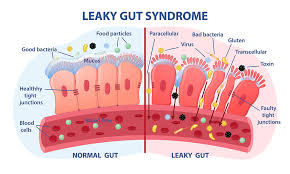Understanding Aluminum Toxicity: What You Need to Know
Aluminum is the third most abundant element in the Earth's crust and has a wide range of industrial and household applications. However, increasing evidence suggests that aluminum exposure may pose health risks, particularly concerning brain health and toxicity. In this article, we’ll explore what aluminum is, how it affects our bodies—especially the brain—and how it may contribute to neurodegenerative diseases like Alzheimer’s. We’ll also discuss sources of aluminum exposure, methods of testing for toxicity, and natural approaches to detoxification.
What Is Aluminum?
Aluminum (Al) is a lightweight, silvery-white metal commonly used in manufacturing due to its durability and resistance to corrosion. It’s found in everything from packaging materials and construction to consumer products such as cookware, deodorants, and vaccines. While aluminum is generally considered safe in limited amounts, accumulating evidence points to potential health concerns with chronic exposure.
How Does Aluminum Get Into Our Bodies?
1. Dietary Sources
- Processed foods: Aluminum-containing additives (e.g., anti-caking agents, coloring agents)
- Baking powders and processed snacks
2. Household Items
- Aluminum foil: Used in cooking and food storage
- Nonstick cookware: Some nonstick coatings contain aluminum
- Deodorants: Aluminum compounds like aluminum chloride are common active ingredients
3. Vaccines
- Some vaccines contain aluminum salts (adjuvants) to boost immune response. While considered safe by regulatory agencies, concerns have been raised about long-term accumulation, especially in vulnerable populations.
4. Personal Care Products
- Antiperspirants containing aluminum compounds
5. Environmental Exposure
- Air pollution from industrial emissions
- Drinking water contaminated with aluminum
Once ingested or absorbed, aluminum can accumulate in tissues, including the brain, bones, and lungs.
Aluminum's Impact on the Brain and Neurodegeneration
Research indicates that aluminum can cross the blood-brain barrier, accumulating in neural tissues. Studies have linked aluminum exposure to neurodegenerative conditions, most notably:
- Alzheimer’s Disease: Some studies suggest that aluminum may promote amyloid plaque formation, oxidative stress, and neuroinflammation—hallmarks of Alzheimer’s pathology.
- *Other neurodegenerative disorders: Parkinson’s disease and multiple sclerosis have also been associated with metal imbalances, including aluminum. Autism likely has a link to Aluminum and other heavy metals as well
While causality remains under investigation, the potential neurotoxicity of aluminum warrants caution, especially in individuals with existing neurological vulnerabilities.
Aluminum and Heavy Metal Toxicity: Inflammation and Systemic Effects
Heavy metals like aluminum can trigger systemic inflammation, disrupting normal cellular functions. Aluminum may activate immune responses, leading to chronic inflammation, which is a common pathway implicated in many chronic diseases, including cardiovascular disease, autoimmune disorders, and neurodegeneration.
Chronic inflammation caused by aluminum accumulation can damage tissues and impair detoxification pathways, exacerbating health issues over time.
Testing for Aluminum Toxicity
1. Hair Analysis
- Pros: Non-invasive, reflects long-term exposure
- Cons: Variability due to external contamination, less standardized
2. Blood Tests
- Pros: Measures recent exposure, widely available
- Cons: Aluminum has a short half-life in blood; levels may not reflect total body burden
3. Post-Chelation Urine Testing
- Method: Administering a chelating agent (e.g., EDTA) followed by urine collection to assess metal mobilization
- Pros: Indicates body burden of metals
- Cons: Requires medical supervision, may cause side effects
Summary:
- Hair analysis is useful for assessing long-term exposure but can be contaminated.
- Blood testing provides a snapshot of recent exposure.
- Post-chelation urine testing-gives a measure of body burden but involves intervention.
Natural Approaches to Removing Aluminum from the Body
A functional medicine approach emphasizes supporting the body’s natural detoxification pathways:
1. Sauna Therapy (Sweat Induction)
- Purpose: Promotes excretion of heavy metals via sweat
- Implementation: Infrared or traditional saunas, starting with short sessions
2. Binding Agents*
- Examples: Modified citrus pectin, chlorella, zeolite, cilantro
- Mechanism: Bind metals in the GI tract to reduce absorption and facilitate elimination
3. Supporting Liver and Kidney Function
- Ensuring optimal function of detox organs enhances metal clearance
4. Nutritional Support
- Adequate intake of antioxidants (vitamins C and E), glutathione precursors, and minerals like magnesium and selenium to combat oxidative stress
5. Chelation Therapy
- Medical chelators (e.g., EDTA, DMSA) can be used under supervision to remove heavy metals, but should be approached cautiously due to potential side effects
References
1. **Exley, C. (2013).** *Aluminum and Alzheimer's disease: the science that describes the link.* Journal of Alzheimer's Disease, 33(2), 377–387.
2. **Krewski, D., et al. (2007).** *Human health risk assessment for aluminum, including exposure from vaccines.* Regulatory Toxicology and Pharmacology, 49(3), 258-262.
3. **Krewski, D., et al. (2010).** *Human health risk assessment for aluminum, including exposure from vaccines.* Toxicology and Applied Pharmacology, 254(3), 262-275.
4. **Genuis, SJ. (2011).** *Heavy metals and human health: current evidence and future directions.* Alternative Medicine Review, 16(4), 363–371.
5. **Genuis, SJ., et al. (2014).** *Heavy metal detoxification: a review.* Alternative Medicine Review, 19(2), 124-139.
6. **Kostoglou-Antetrou, K., et al. (2008).** *Aluminum and neurodegeneration: an update.* Journal of Clinical Neuroscience, 15(5), 558–561.











